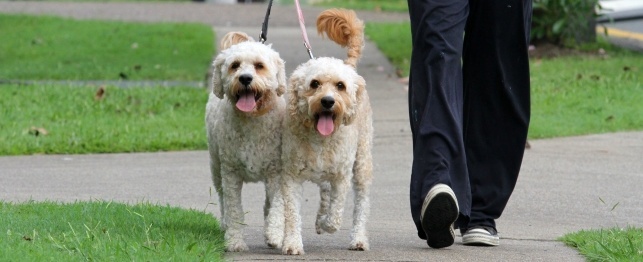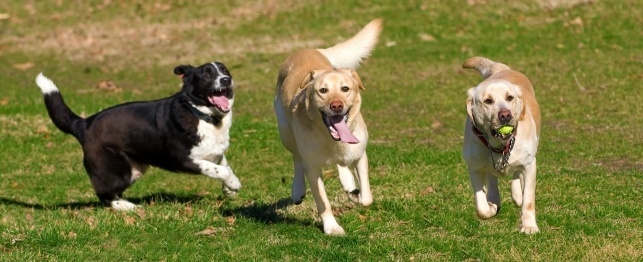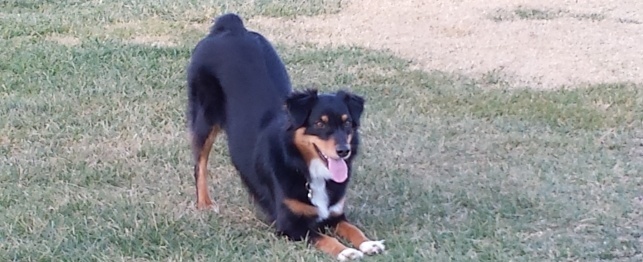Separation anxiety can be one of the most distressing things a dog can experience. Unfortunately, this agonizing condition occurs in about ten percent of all dogs - making it one of the most common of all dog behavior disorders. In fact, it's so common that you might almost think dogs and separation anxiety go hand in hand.
You're lucky if you've never had a dog with separation anxiety. But if you've not been through the experience, you might not have a good understanding of what it is, so here is a brief explanation.
Separation anxiety is a behavior disorder that has been defined as intense anxiety, panic or even terror which is triggered when a dog is separated or isolated from its owner(s). It can vary in severity from dog to dog, with some cases being fairly mild and others being quite severe.
Particular Dogs and Separation Anxiety
Certain breeds of dogs and separation anxiety seem to go together. For example, Weimaraners, Airedales, Springer Spaniels and German Shepherds seem to be genetically predisposed to separation anxiety.
In addition to this apparent relationship between certain breeds of dogs and separation anxiety, a significant percentage of dogs adopted from animal shelters are likely to develop separation anxiety. Most dogs coming from shelters have experienced the psychological trauma of being abandoned by their previous owners, and they panic at the possibility of their new owners abandoning them as well. They simply don't realize that when their new owners leave them home alone, the "abandonment" is only temporary.
And, puppies that are separated from their mothers and littermates before reaching eight weeks of age have also been identified as having an increased chance of developing this behavior disorder. Once again, psychological trauma is responsible. Puppies purchased from pet shops are often removed from their litters too early and then kept in small cages, and this makes them prime candidates.
Symptoms of Separation Anxiety
As mentioned above, the severity of this behavior disorder can vary significantly from one dog to the next, but there is a distinct constellation of symptoms that dogs experience. Watch for some or all of the following behaviors:
When your dog realizes you're about to leave the house (the signals of leaving can include things like putting on your shoes or jacket, picking up your keys, grabbing your purse and so on), it becomes anxious and follows you from one room to the next, not letting you out of its sight. This might be accompanied by pacing back and forth in front of you, whining, crying or trembling with fear.
Once you walk out the door, your dog begins whining, crying, barking and/or howling incessantly, or scratching, chewing or digging at window frames, doors or carpeting (your dog's attempt to escape from the house and find you). Scratching or chewing on other inappropriate items such as furniture or cabinets is also common, as is urinating and/or defecating in the home, even though the dog is fully housetrained. More severe cases of separation anxiety can even cause dogs to mutilate themselves by pulling out their fur or obsessively licking or chewing their skin until it's raw and bleeding.
When you come back home, you receive a prolonged, over-the-top greeting, not the normal 30-second greeting you'd receive from a dog that's well-adjusted. It's as if you've been away for days instead of hours. Look for incessant licking and other exuberant behaviors, like running excited, happy circles around you for several minutes. Your dog will probably also "stick to you" like Velcro for a lengthy period.
Minimizing Your Dog's Separation Anxiety
If your dog has separation anxiety, try this short list of do's and don'ts which are designed to help minimize your dog's fears and anxiety.
Things You Can Do:
Before you leave your home, wear your dog out by giving it as much exercise as possible. A 15 to 20 minute vigorous walk is the minimum, but an equally long strenuous run is even better. Basically, the more exercise the better. Generally speaking, a tired dog is a well-behaved dog, and a tired dog won't be nearly as fearful when you leave the house. And, if your dog is really tired, it might just sleep during your absence.
Keep your dog entertained while you're away. If you give your dog toys and other items that are acceptable to chew on, you may succeed at reducing the boredom, loneliness and anxiety your dog feels when it's left alone. Toys can distract your dog and reduce barking, whining and crying.
Turn on a TV or radio. Classical music is always soothing, but talk shows also work well. Hearing music or voices can calm your nervous dog by making it think it's not alone in the house, and a TV or radio can also provide some entertainment to deter or delay the onset of boredom. Keep the volume low.
Desensitize your dog to the cues that normally indicate you're leaving. Jingle your keys, pick up your purse, put on your coat - but then sit down again instead of leaving. Practice until your dog stops reacting to these cues. Then step outside the door but return immediately. Once again, practice until your dog doesn't react. Finally - and gradually - increase the time you're out of the house.
Give your dog a room with a view. Watching the world go by can reduce a dog's feeling of isolation.
Things to Avoid:
Don't coddle your dog if it starts whining or crying. Trying to comfort your dog is a big mistake because it sends the message that your dog's concern is justified.
Extended goodbyes and fussing over your dog as you're leaving are also big mistakes. You want to downplay your departure, not make it seem like it's more than it really is - a temporary absence.
Remember, you can work with your dog to overcome separation anxiety. Dogs and separation anxiety don't always go hand in hand.

 How Much Exercise Does My Dog Need?
How Much Exercise Does My Dog Need?
How Much Exercise Does My Dog Need?
How Much Exercise Does My Dog Need?
 Safe Fetch Toys for Your Dog
Safe Fetch Toys for Your Dog
Safe Fetch Toys for Your Dog
Safe Fetch Toys for Your Dog
 Tips for Keeping Your Dog Safe at the Dog Park
Tips for Keeping Your Dog Safe at the Dog Par
Tips for Keeping Your Dog Safe at the Dog Park
Tips for Keeping Your Dog Safe at the Dog Par
 Dog Games - Try Puppy Push-Ups
Dog Games - Try Puppy Push-Ups
Dog Games - Try Puppy Push-Ups
Dog Games - Try Puppy Push-Ups
 Playing Charades with Your Dog
Playing Charades with Your Dog
Playing Charades with Your Dog
Playing Charades with Your Dog